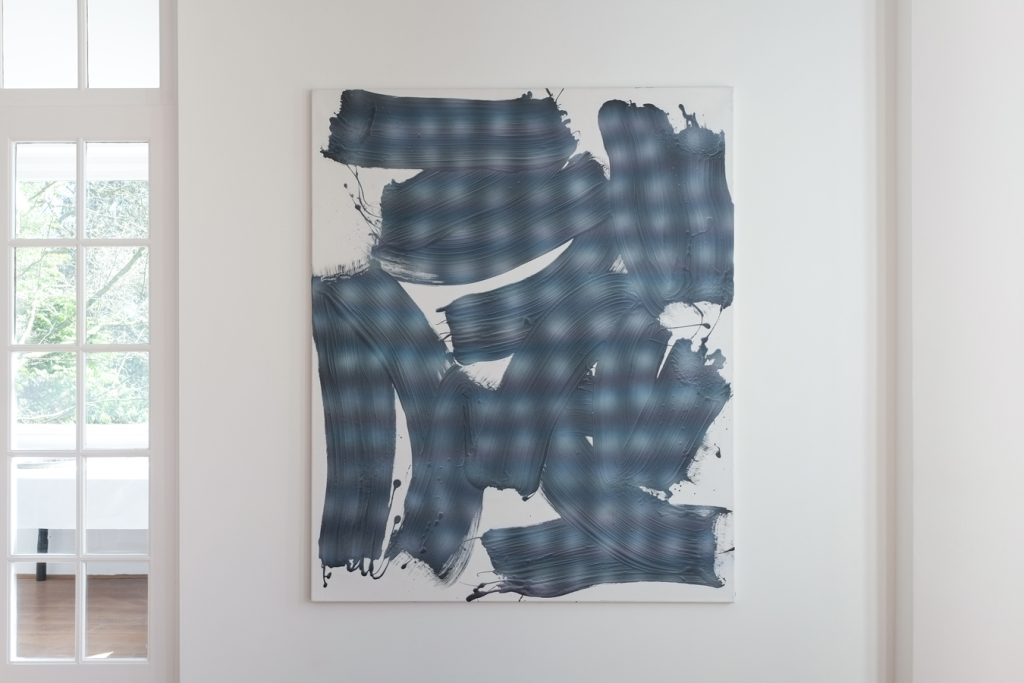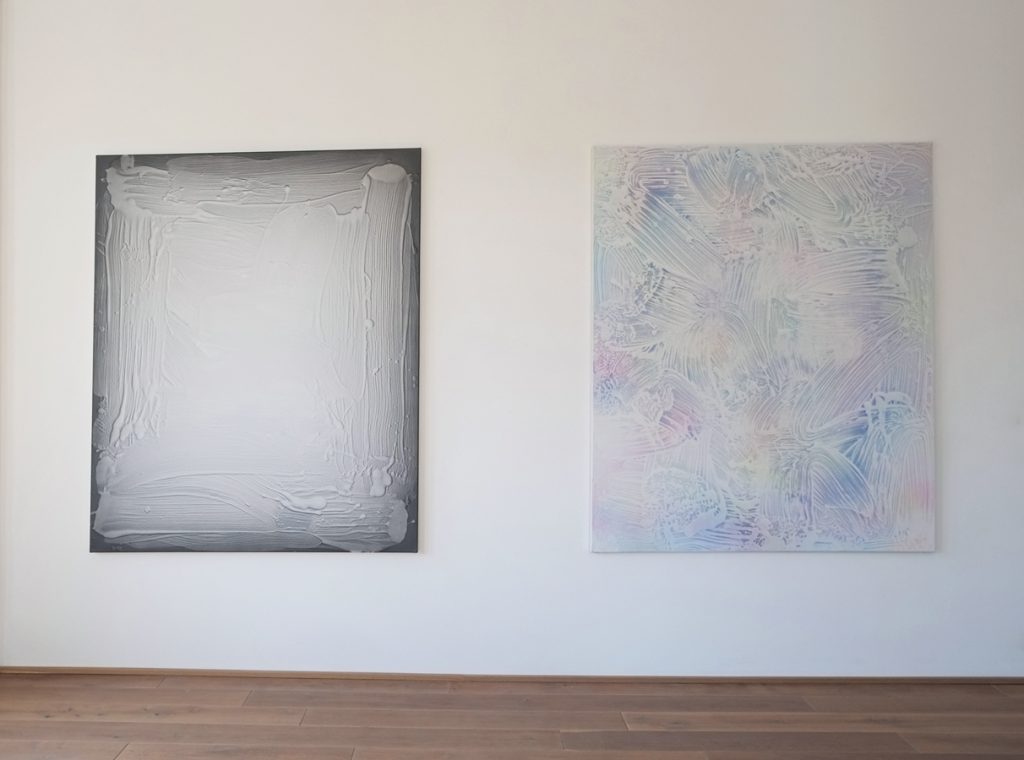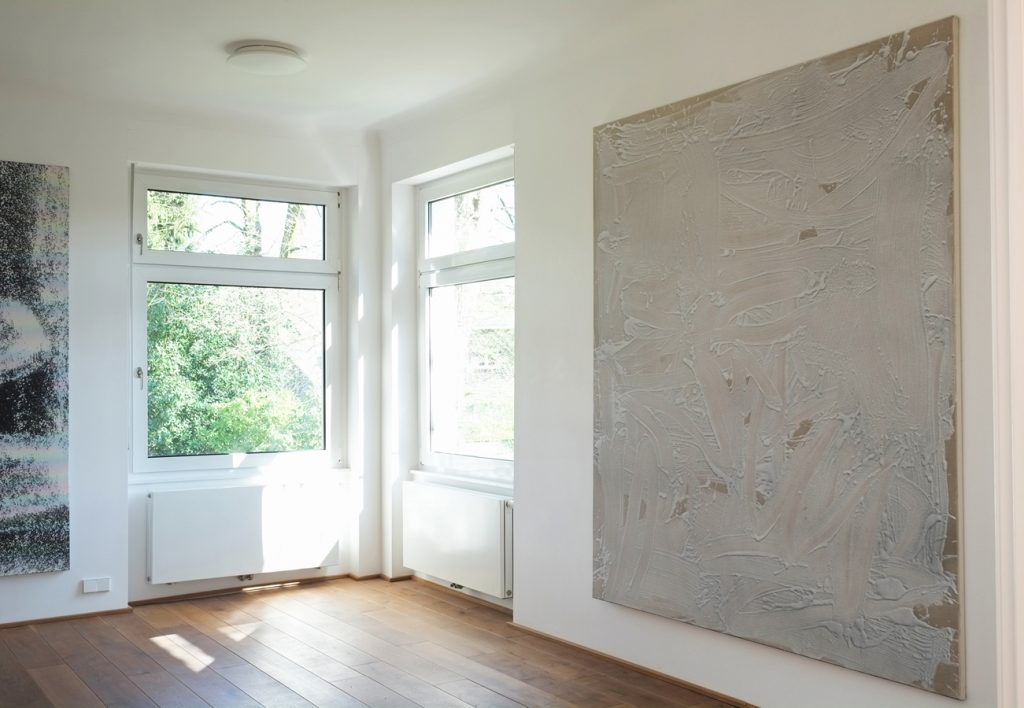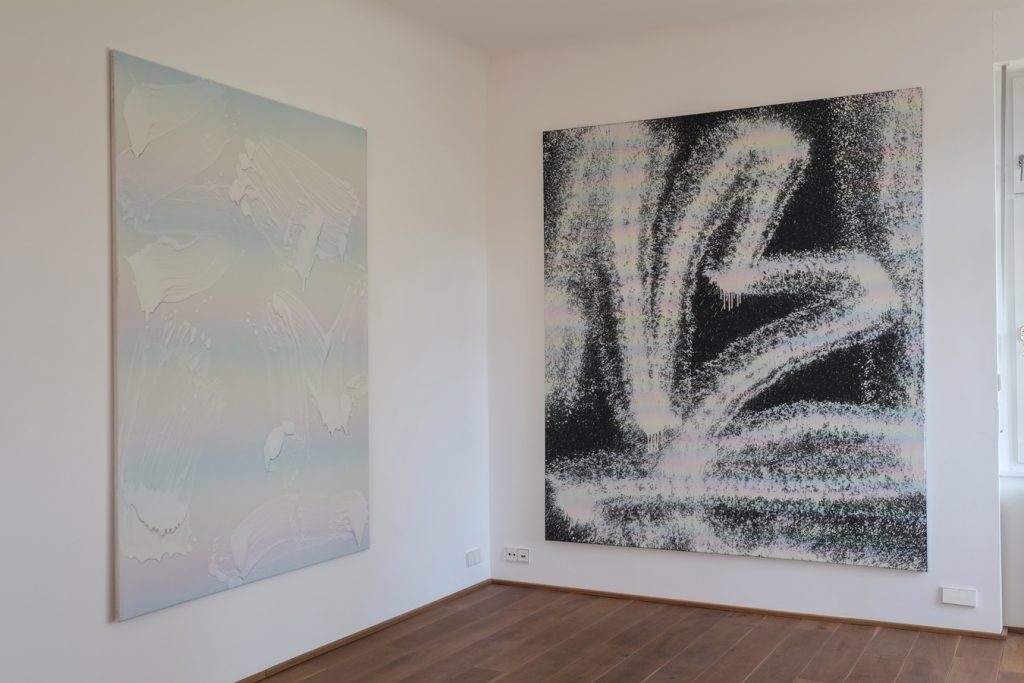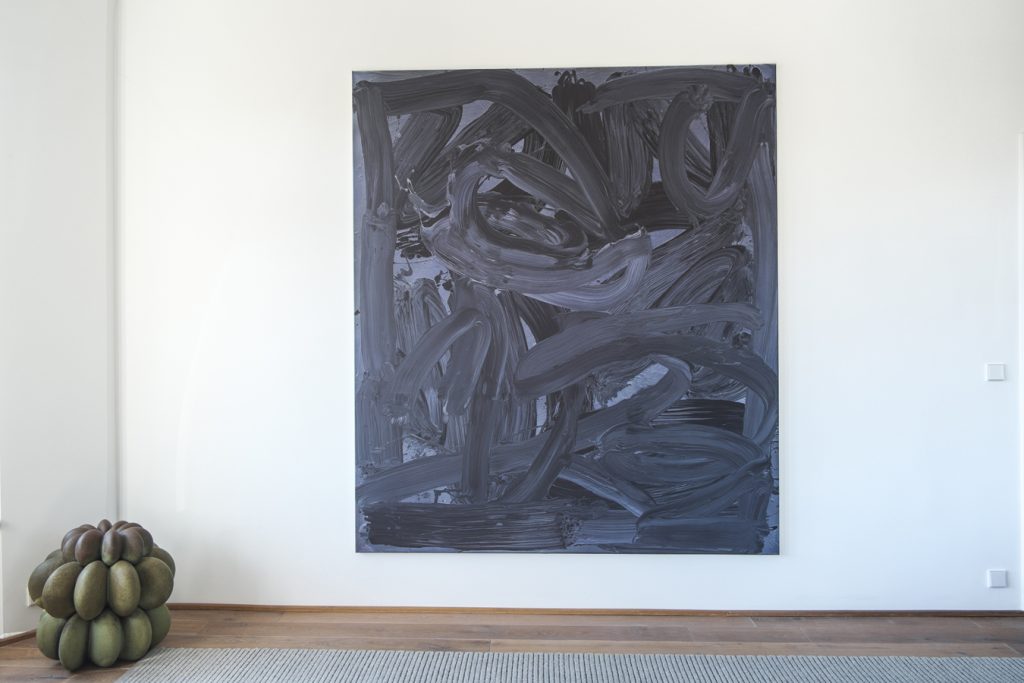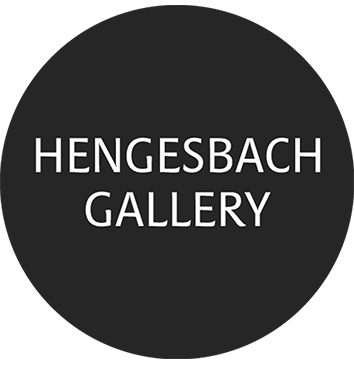Moritz Neuhoff
March 24 – July 3, 2020
Moritz Neuhoff paints large-format images and processes visual experiences drawn from our media environment—from the small-format digital devices like smartphones and laptops. But how can the electronically generated image characteristics of such devices be simulated or transferred onto huge canvases using brush and paint? Neuhoff has found astonishing solutions to this. At the same time, he engages with a fundamental question of painting: how something other than what is seen can lie hidden behind a visual appearance. In Neuhoff’s works, it is not figurative scenes that conceal something, but rather the seemingly meaningless individual gestures of painting themselves that begin to articulate something—and then transform in such a way that the image becomes a veil, in which something is both revealed and concealed.
Neuhoff’s paintings operate, on one hand, with the affirmation that painting is exactly what it can be through the physical process of applying paint. On the other hand, they radically subvert this very process, as upon closer inspection the supposed materialities seem to dissolve. Into this dialectical process of physical reality and virtual appearance, all the defining core elements of painting are drawn: light, color, space, and movement.
The light in his paintings draws from contemporary perception shaped by screens, where the light seems intangible—emerging from behind or within visual elements—and the contours of things shine differently. Neuhoff’s paintings house an iridescent, immaterial light that gently rises from the painted surface without sharply detaching itself from it.
The colors are restrained, lurking in latency, only revealing their full range upon careful observation. They are not borrowed from nature, nor are they connected to the color schemes of our product world with its artificial surfaces. They give the impression of simulating themselves. They constantly shift in tone, interwoven with an unreal light.
Neuhoff creates zones of varying brightness and works with deep body shadows, which he layers in translucent glazes. This creates a sense of spatiality, further intensified by a dialogue between sharpness and blur. The spaces shift without resulting in a clearly defined spatial interlocking. One can never be sure what constitutes foreground and what lies in the background. Space takes on a fictional character.
The images depict a world in motion. Neuhoff contrasts different dynamics of movement. He further amplifies this uncertainty by juxtaposing different scales. Movements can be interpreted as magnified microscopic phenomena or as miniaturized impressions of things seen from great distances. They seem to start without a beginning, erupting suddenly with full force, and appear unanchored to any center that might provide an ordering reference. They can be read as fragments pulled from the sprawling, chaotic context of urban graffiti or perceived as interstellar, complex formations. The emergence of the virtual also touches the material presence of the paintings as a whole. From a distance, one might believe they are seeing a distinct, plastic application of material due to the dark inner shadows—but up close, one realizes the flatness of the images. Neuhoff’s painting seems to render the difference between material paint application and printed surface absurd. Painting immerses itself in the mimicry of media qualities. The illusion is so perfect that one no longer believes in a painterly authorship but in a digital print of unknown origin with an enigmatic subject.
This oscillation between the subjectivity and objectivity of movements also creates interpretive uncertainties regarding the forms. Time and again, dynamic gesture stands in contrast to neutralizing grid forms or grainy, sandy image grounds, and the gesture at times disintegrates into a highly artificial painterly performance. Expressions of contemporary youth culture, visual glimpses into scientifically explored micro- and macroworlds, and self-referential demonstrations of painting merge into one another.
Since Neuhoff continually references the complex history of different strategies of applying paint—while simultaneously dematerializing their appearance—his work can be understood as a kind of *meta-painting*. This meta-painting contains all the elements of painting yet continuously withdraws the act of painting itself from real presentation. It can be seen as a reflection on painting; appearance is reflected as appearance. The image shows its own making and simultaneously unmasks it as illusion.
However, in this dialectic of appearance, unmasking is only one side. At the same time, it carries a deeper, sensual experience: the immersion into a world of veils—where one seems to see or grasp something that also slips away again. With Neuhoff, the image becomes a veil. In the dialogue between sharpness and blur, in movements that cannot be grasped because they emerge from the depth of space and recede back into it—or in the spray of color on the surface, which dissolves and merges with its background—there is a continual opening and closing of the image. In this process, Neuhoff’s paintings dive into the experience of *transreality*.
In Neuhoff’s work, the single painterly gesture is not composed toward a fixed order or graspable context. The individual gesture seems arbitrary—a constant, seemingly senseless cry for freedom. The way the gestures are seen together raises the question of the meaning of painterly structure. Paradoxically, these gestures do not remain isolated static elements. They generate coherence without any recognizable compositional structure—through their manner of visual self-dissolution.
These gestures, in their relaxed juggling of meaninglessness, density, and chaos, condense in the images’ open depth movements into veils that generate a constantly shifting image space—one that jumps back and forth. It is precisely this elusive pictorial space that makes us aware of the intangible nature of freedom, which for us humans seems to fall from the sky.
Text: Rolf Hengesbach
Installation Views
